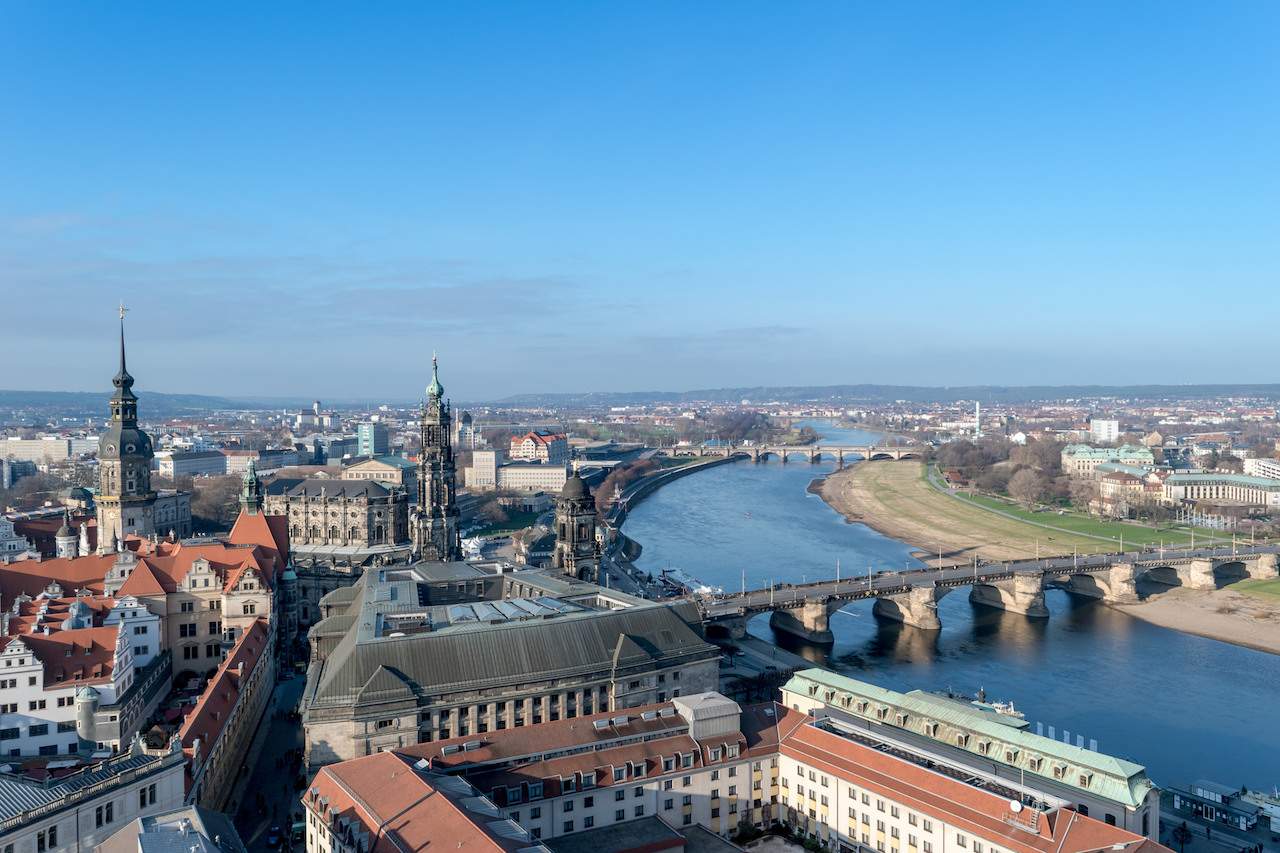Dresden, situated in Eastern Germany on the border of the Czech Republic, is perhaps best known for being heavily bombed during the Second World War. The British/American aerial bombing attack in 1945 caused a firestorm that swept through the city centre, destroying many of Dresden’s most iconic buildings and resulting in the deaths of nearly 25,000 people.
Over the course of 60 years, the Old Town has been painstakingly rebuilt from the rubble; its iconic buildings recreated brick by brick. Many of the city’s half a million residents contributed to Dresden’s restoration by volunteering to clear the rubble, which continued well into the 90s.
Nowadays, the scars of War are barely noticeable and Dresden has become one of Germany’s must-visit destinations. The River Elbe snakes through the city, dividing the traditional “Old Town” and buzzing “Neutstadt” (New Town), which has one of the liveliest nightlife scenes in Eastern Germany.
Must visit
On the left bank of the Elbe is Dresden’s Altstadt (Old Town), which can be explored entirely on foot. In the summer months, the sound of classical music fills the main square – the buskers here are exceptional. As you walk along the cobbled streets admiring the Renaissance, Baroque and 19th century architecture, it is hard to believe that many of these grand buildings are reproductions. Among them is the Dresden Frauenkirche, an 18th century Lutheran church that stands proudly in the centre of the Altstadt.
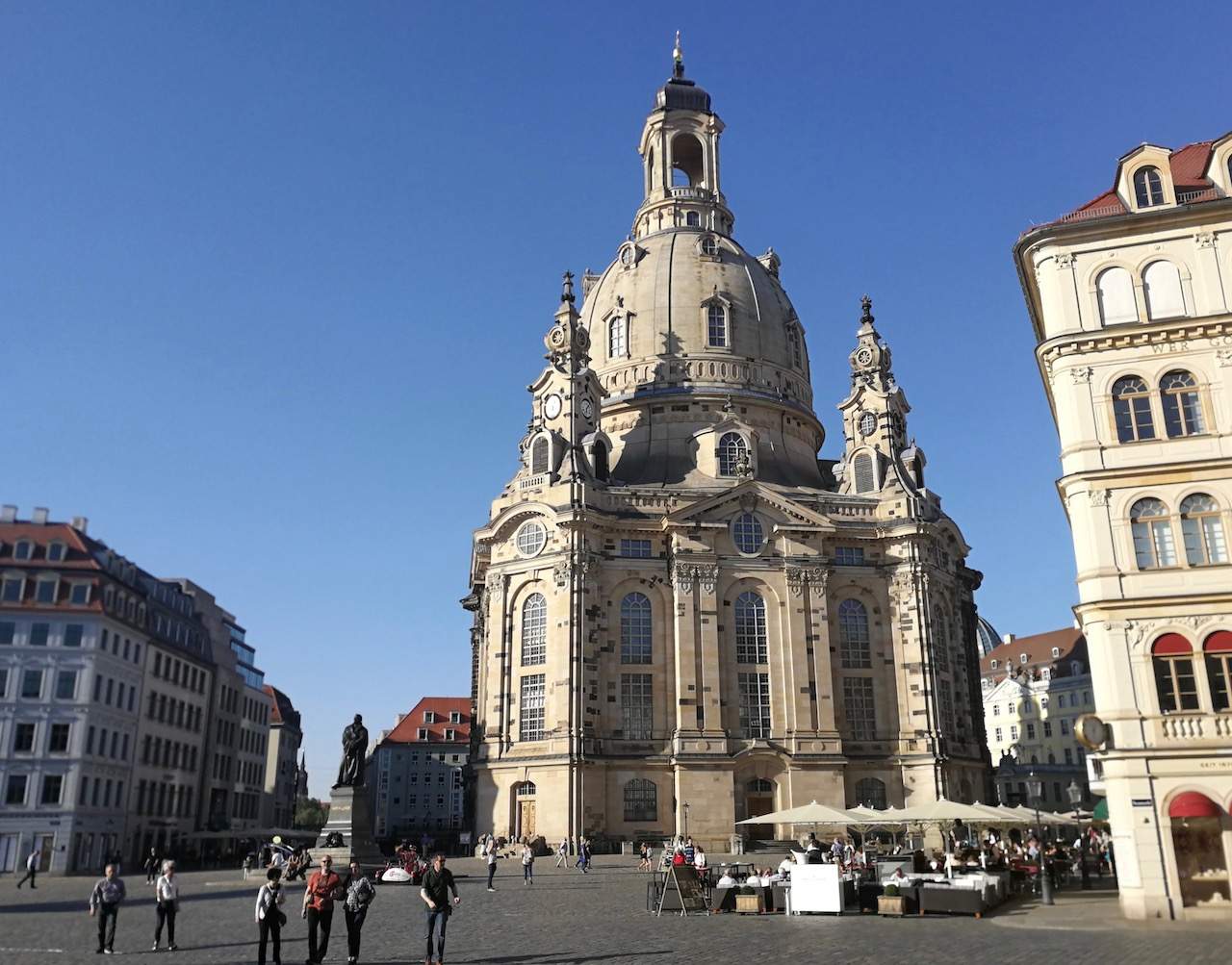
Dresden Frauenkirche (c) Lucy Woods
Also known as The Church of our Lady, it features one of the largest domes in Europe and is a spectacular example of Protestant sacred architecture. During the bombings of 1945 the church dome collapsed, and for 50 years the ruins served as a war memorial. Restoration was finally completed in 2005, using 8000 of the original stones, and the Frauenkirche now stands a symbol of reconciliation between former warring nations.
Just around the corner from the Frauenkirche is a 101m long mural depicting the “Procession of Princes” – 35 rulers belonging to one of Saxony’s ruling families, who governed the region 800 years ago. The mural is composed of 25,000 Meissen porcelain tiles and presents a dramatic and rousing picture of medieval Saxony. The mural was spared from the brunt of the bombings, but still suffered serious smoke damage and some 700 tiles had to be repaired or replaced.
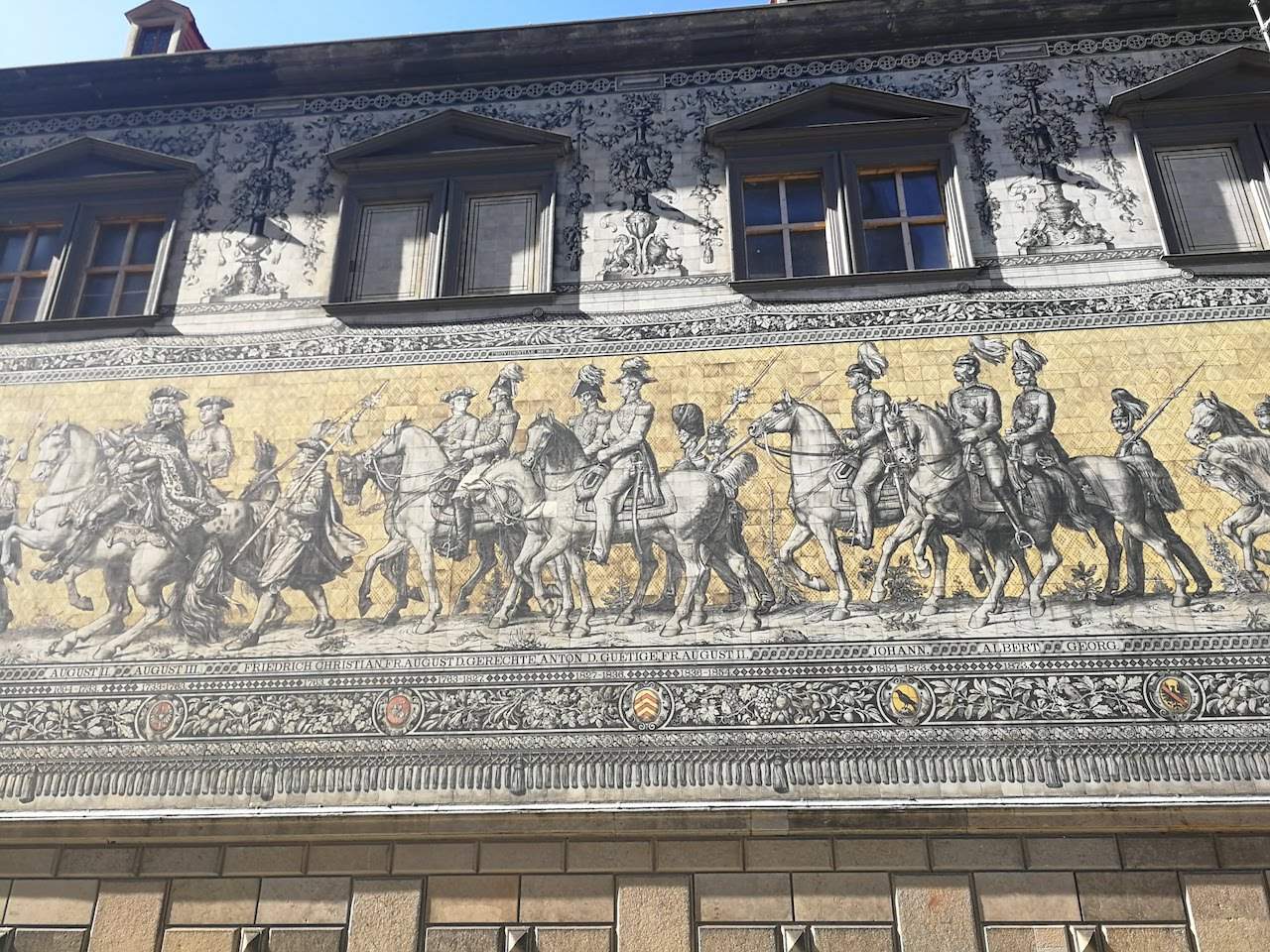
Procession of Princes (c) Lucy Woods
There is one modern gem that should not be missed. Albertinum is a contemporary art museum on Brühl’s Terrace that houses a former courtyard, creating a huge covered space for exhibitions and events. The museum hosts permanent and temporary exhibitions, including the New Masters Gallery and Sculpture Collection.
The size and scale of the building create an atmosphere of glorious tranquility and the whole museum is a pleasure to explore. Don’t miss the sculpture hall, which features a visually stunning collection of classical modern sculptures. Get there a couple of hours before closing time and you may have the museum to yourself – bliss!
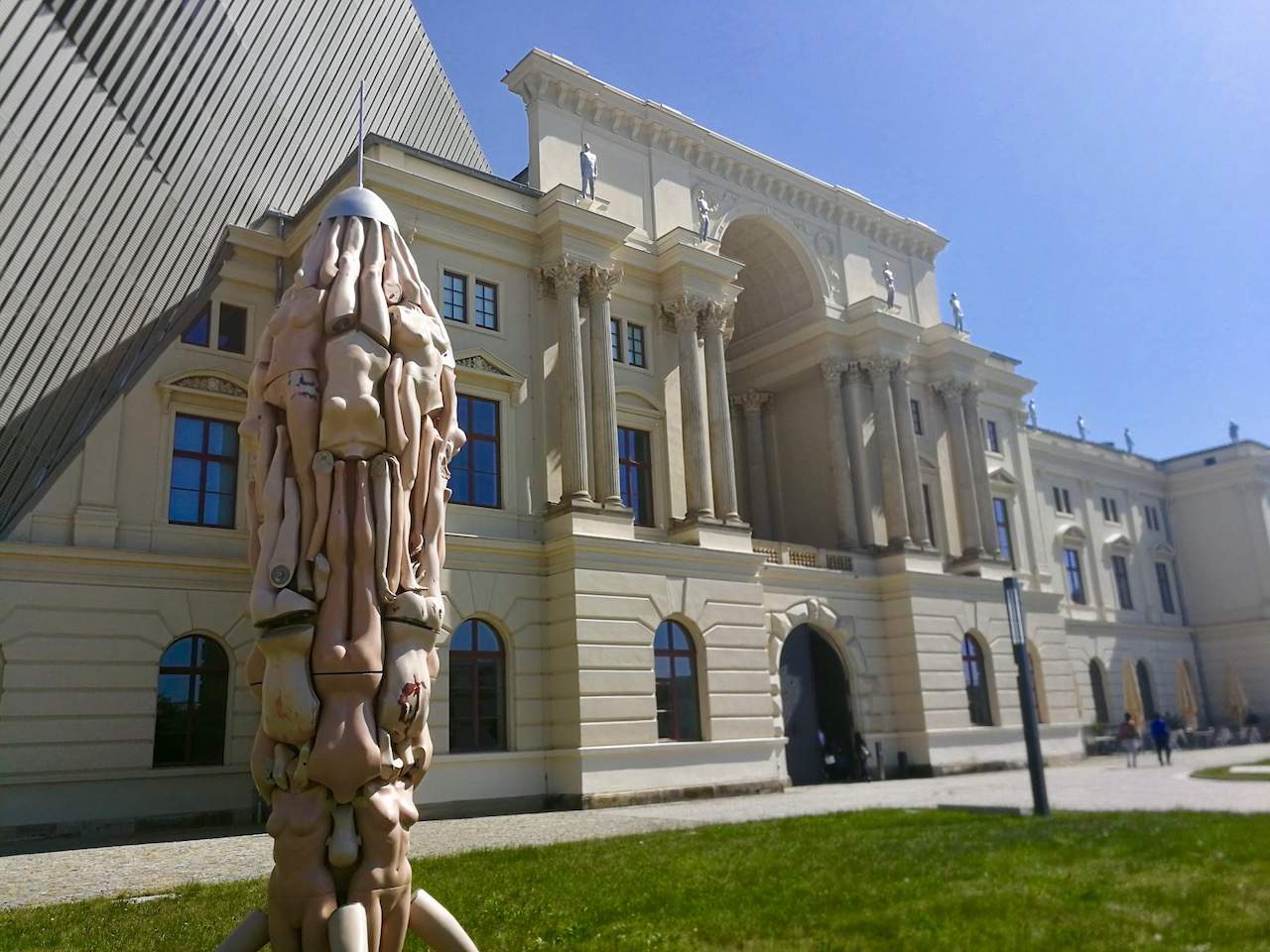
Bundeswehr Military History Museum (c) Lucy Woods
Across the river is another museum worth visiting: the Bundeswehr Military History Museum. Located in the Albertstadt district, the former armoury represents the 700 year history of the German armed forces. The original building has been updated with a striking modern attachment in the form of a huge glass arrowhead, which doubles as a gallery space and viewing platform.
Highlights of the museum include an unflinching exhibition on drug use by both the German and allied armies during World War II – crystal meth was used by many German soldiers. At the same time, Benzedrine was the drug of choice of the British army. There is also an interesting exhibition on animals used in war, from elephants to carrier pigeons.
Must go for gold
One of Dresden’s more colourful historical figures was Augustus the Strong, the Elector of Saxony who ruled between 1694 and 1733. Augustus earned his nickname thanks to his displays of great physical prowess, such as breaking an iron horseshoe clean in half. As well as being a bit of a show-off, Augustus the Strong had a predilection for shiny things. In the 12th to 16th centuries Saxony was one of the richest countries in the world, and Augustus invested this wealth in ridiculous quantities of gold and precious stones.
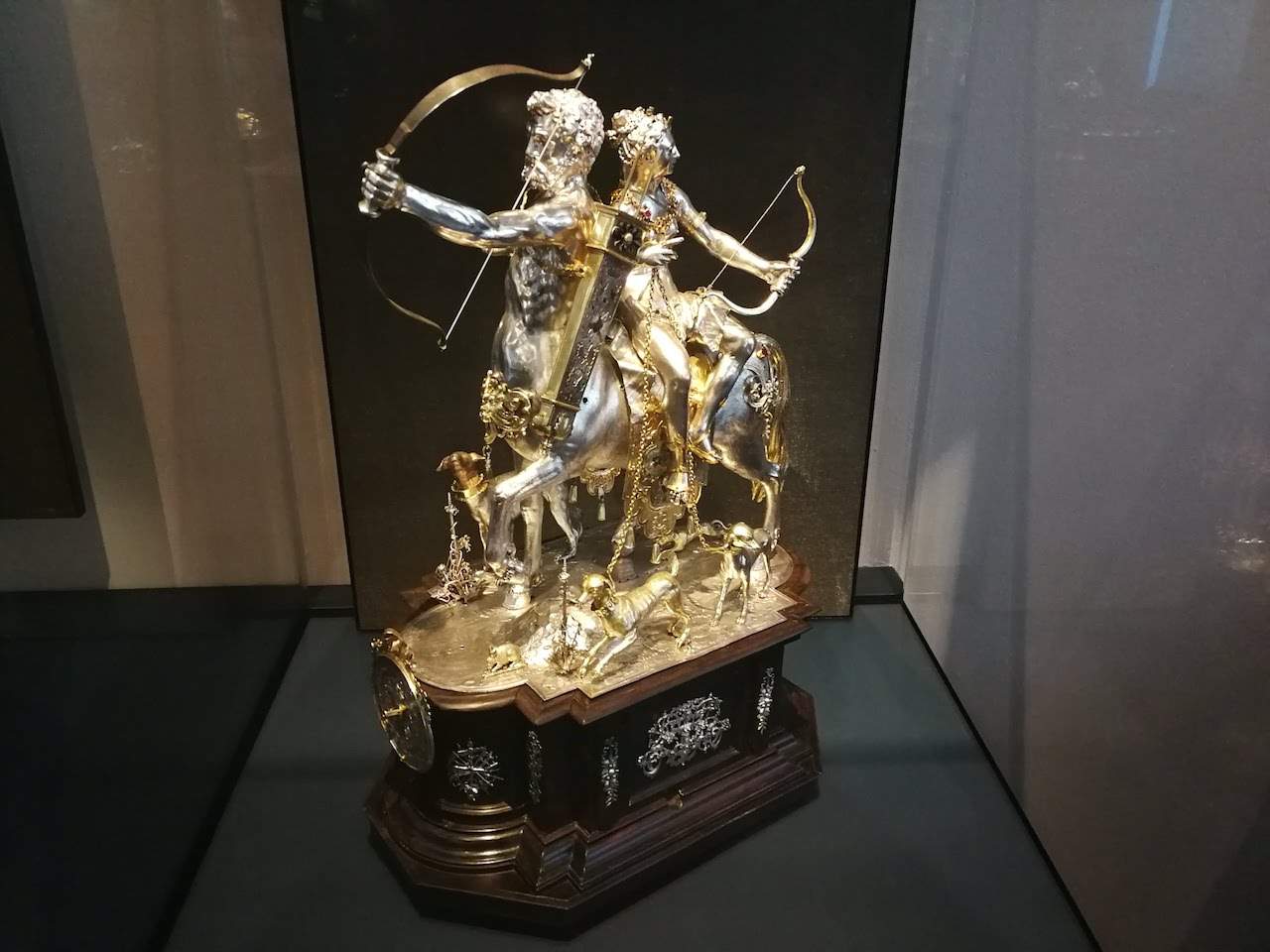
“Upmarket” drinking game from the 1600’s (c) Lucy Woods
Much of this collection is housed in the Residenzschloss (the Royal Palace), which contains a vast museum complex displaying everything from weapons of the Ottoman empire to 17th century drinking games. One of the museums, the Green Vault, was founded by Augustus the Strong and contains the largest collection of treasures in Europe. The sheer volume of gold, ivory and precious stone ornaments is almost impossible to comprehend.
Must question what you see
As you stroll long the River Elbe, you may notice a grand looking building that resembles a mosque. It is in a fact Yenidze, a former cigarette factory that was built in an “Oriental” style in order to promote the exotic origins of the tobacco it produced. These days, the building functions as an office space, and the decorative dome houses a restaurant.
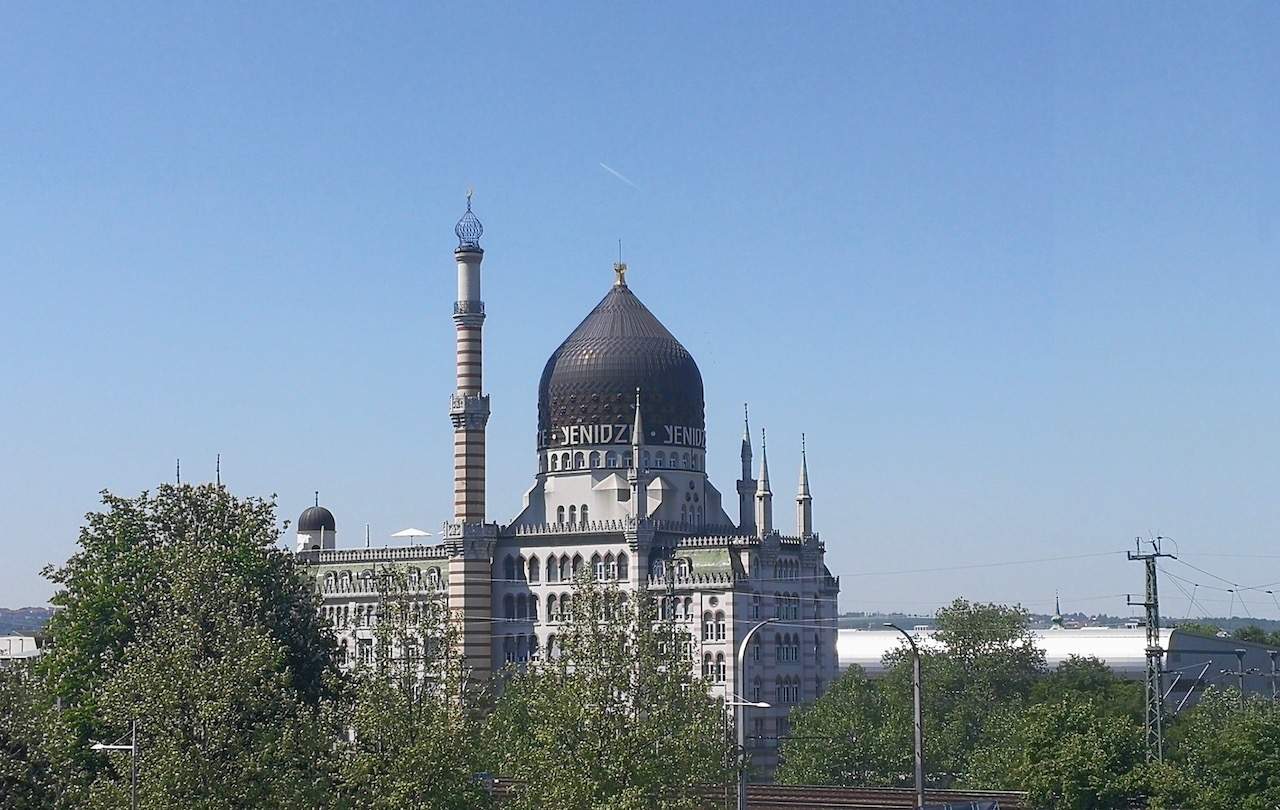
Yendize: not what it seems (c) Lucy Woods
Must shop
Check out the colourful buildings and painted murals of Outer Neustadt, where Louisenstrasse meets Alaunstrasse. The labyrinthine and colourful courtyards conceal a host of boutique shops selling quirky jewellery, clothes, bags and swimwear.
Must eat and drink
Outer Neustadt is an ideal location to grab a beer and taste some of Germany’s culinary delights. Lila Sosse is nestled amid the mural covered courtyard of Kunsthofpassage, and serves a delicious selection of German tapas. Try the cheese spaetzle with fried onions or the herring tartar with beetroot.
A visit to Dresden would be incomplete without trying the classic schnitzel. Head to Café Vis-á-Vis, which serves a generous portion with white asparagus and hollandaise sauce to a backdrop of lovely views of the Elbe.
To satisfy your sweet tooth, Camondas is an upmarket chocolate shop with a divine selection of chocolates, pralines and speciality ice cream. You are given a wicker basket that you can fill with your chosen chocolates, and the friendly staff will then wrap them up for you in a beautifully presented box.
Must stay
The four-star Amedia Plaza Dresden is located in the centre of the Old Town and has exceptionally comfortable rooms, a quirky interior and is just a 20-minute taxi to Dresden Airport.
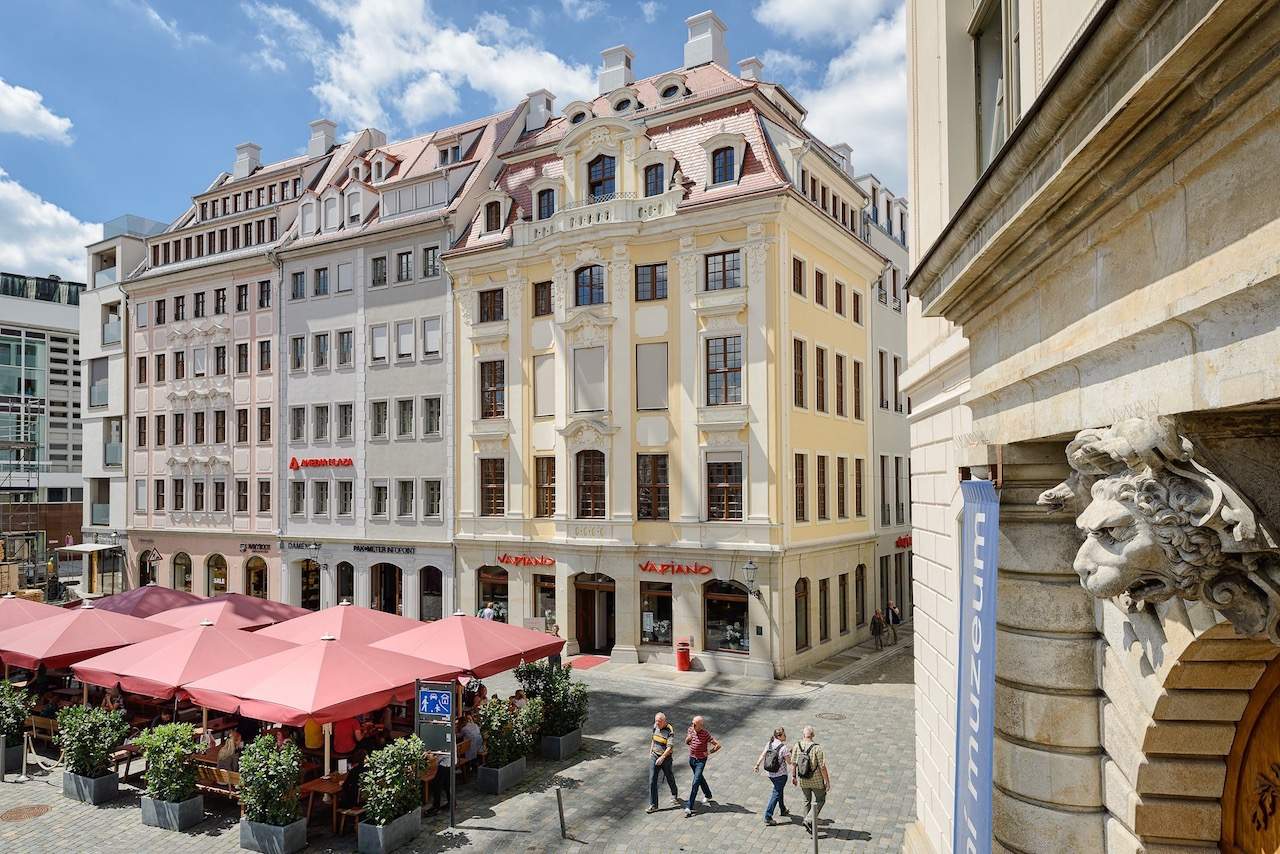
(c) Amedia Plaza Dresden
READ OUR REVIEW: Hotel Review: Amedia Plaza Dresden, Germany
Getting there
There are no direct flights from the UK to Dresden. However Lufthansa offer daily flights from London to Dresden via Munich and Frankfurt for as little as £200 for a return flight. From the airport, you can either get a taxi to the city centre (takes about 30 minutes) or take the train from the airport to Dresden Hauptbahnhof.
For more information, visit the German National Tourist Board website.
You may also like: A musical tour of Dresden

